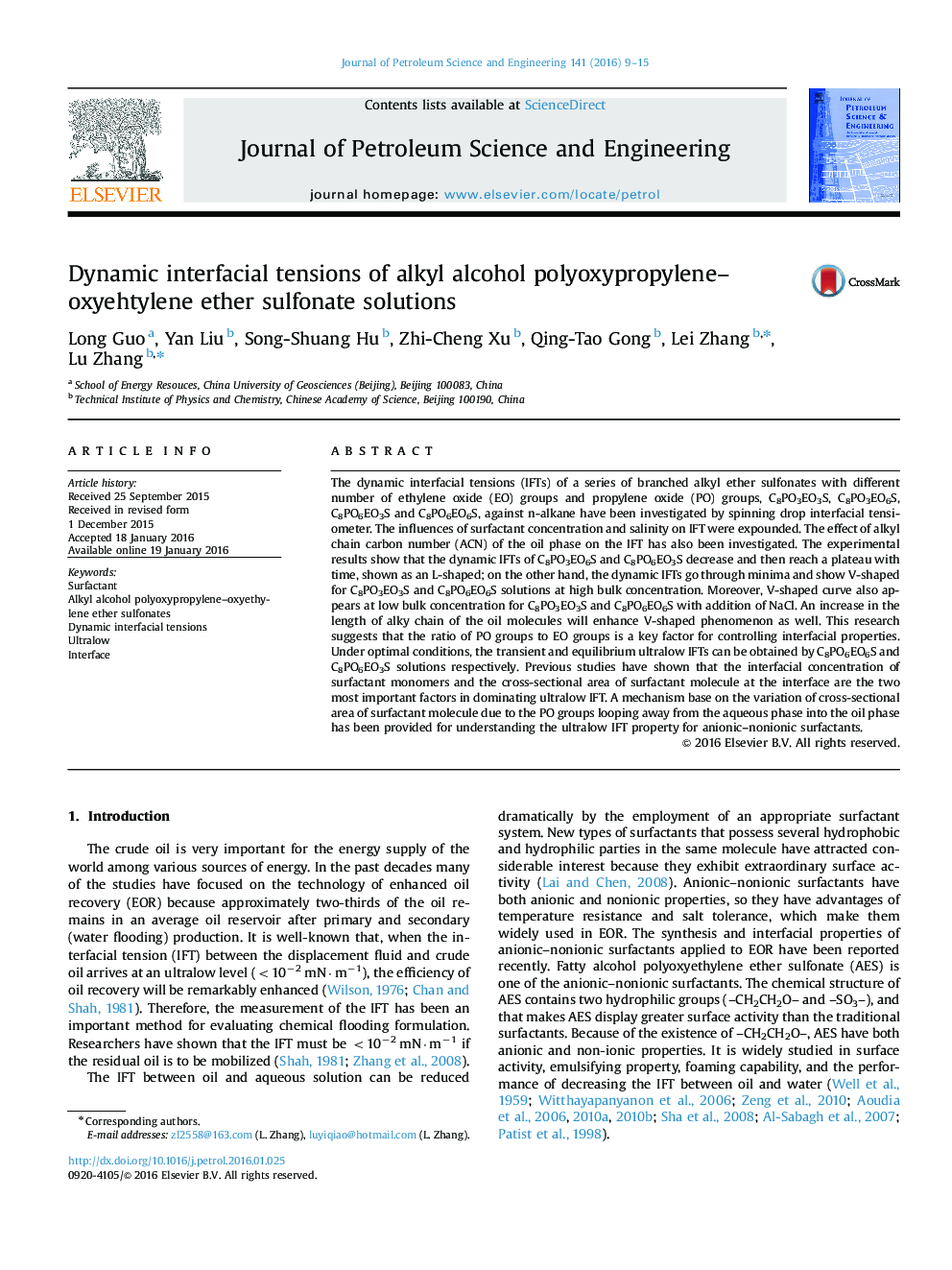| Article ID | Journal | Published Year | Pages | File Type |
|---|---|---|---|---|
| 8126239 | Journal of Petroleum Science and Engineering | 2016 | 7 Pages |
Abstract
The dynamic interfacial tensions (IFTs) of a series of branched alkyl ether sulfonates with different number of ethylene oxide (EO) groups and propylene oxide (PO) groups, C8PO3EO3S, C8PO3EO6S, C8PO6EO3S and C8PO6EO6S, against n-alkane have been investigated by spinning drop interfacial tensiometer. The influences of surfactant concentration and salinity on IFT were expounded. The effect of alkyl chain carbon number (ACN) of the oil phase on the IFT has also been investigated. The experimental results show that the dynamic IFTs of C8PO3EO6S and C8PO6EO3S decrease and then reach a plateau with time, shown as an L-shaped; on the other hand, the dynamic IFTs go through minima and show V-shaped for C8PO3EO3S and C8PO6EO6S solutions at high bulk concentration. Moreover, V-shaped curve also appears at low bulk concentration for C8PO3EO3S and C8PO6EO6S with addition of NaCl. An increase in the length of alky chain of the oil molecules will enhance V-shaped phenomenon as well. This research suggests that the ratio of PO groups to EO groups is a key factor for controlling interfacial properties. Under optimal conditions, the transient and equilibrium ultralow IFTs can be obtained by C8PO6EO6S and C8PO6EO3S solutions respectively. Previous studies have shown that the interfacial concentration of surfactant monomers and the cross-sectional area of surfactant molecule at the interface are the two most important factors in dominating ultralow IFT. A mechanism base on the variation of cross-sectional area of surfactant molecule due to the PO groups looping away from the aqueous phase into the oil phase has been provided for understanding the ultralow IFT property for anionic-nonionic surfactants.
Related Topics
Physical Sciences and Engineering
Earth and Planetary Sciences
Economic Geology
Authors
Long Guo, Yan Liu, Song-Shuang Hu, Zhi-Cheng Xu, Qing-Tao Gong, Lei Zhang, Lu Zhang,
